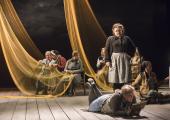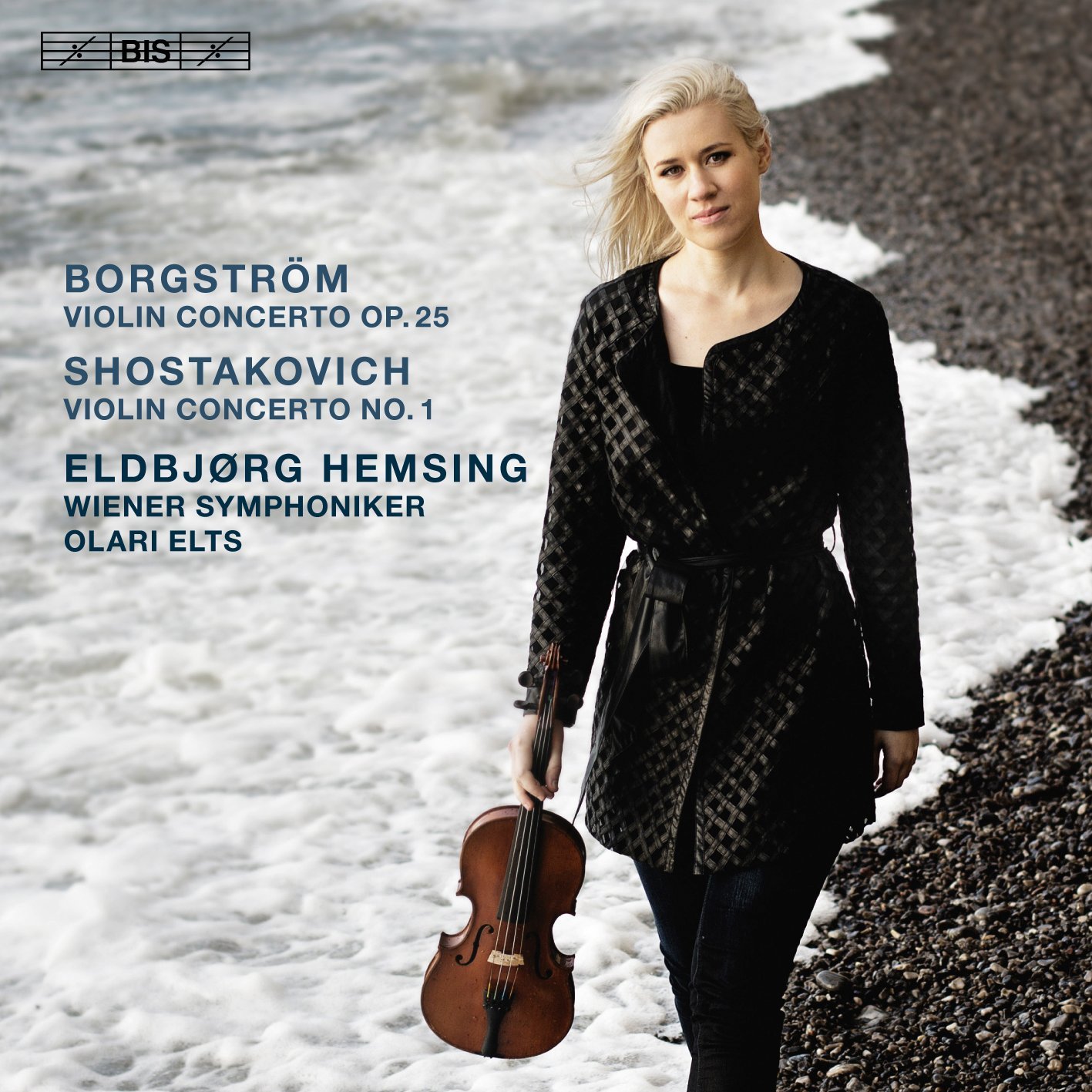CD: Skadedyr - Musikk!

Magpie-minded smörgåsbord from Norway’s self-declared musical ‘pests’
In spirit if not musical style, Musikk! shares chromosomes with late-Sixties ESP-label mavericks like Cro Magnon and Octopus, as well as The Residents of Meet the Residents, early This Heat and the Rock in Opposition collective. Sun Ra is in there too. The non-linear third album from Norway’s Skadedyr skips through jazz, traditional music, atonal scrapings and wind instrument burblings – all during the same piece.
Der fliegende Holländer, Longborough Festival review - stand and deliver on an empty stage

Wagner's early brilliance dimmed by patchy singing and plodding direction
Brilliant and innovative though it is in many respects, The Flying Dutchman is by no means a straightforward piece to stage. It’s an odd, sometimes uncomfortable mixture of the genre and the epic. At Sadler’s Wells in the sixties they had a little ship and a big ship that hove into view, a fishing village, sailors with tankards and striped shirts, and girls at looms.
CD: Espen Eriksen Trio with Andy Sheppard - Perfectly Unhappy

Intermittently striking union of Norwegian jazz combo and British saxophonist
Perfectly Unhappy’s sixth track makes the album’s case. Until this point, Andy Sheppard’s playing has largely gone with the flow; working through and around the melodies pianist Espen Eriksen has composed for his trio’s first recorded collaboration with the British saxophonist. A minute 20 seconds into “Naked Trees”, the double bass comes to the fore. Then, after another 55 seconds, Sheppard begins playing with a free-flowing sinuousness and spontaneity which wasn’t previously apparent.
Violinist Eldbjørg Hemsing: 'in the moments when magic happens, you think, that's why we do this'

On a Norwegian rediscovery, communication and twentysomething enterprise
In a classical recording industry seemingly obsessed with marketing beautiful young female violinists, but very often presenting them in repertoire to which most of them seem to have little individual to add, how do you make your mark? Norwegian Eldbjørg Hemsing came up with a bright idea typical of a thoughtful approach in which the music always comes first: to twin a 1914 concerto she genuinely admires by a compatriot very few people will know, Hjalmar Borgstrøm (1864-1925), with what is perhaps the ultimate 20th century challenge to violinists, Shostakovich's First Violin Concerto.
Classical CDs Weekly: Borgström, Shostakovich, Tchaikovsky, Alec Frank-Gemmill

A rediscovered Norwegian concerto, a stormy romantic symphony and some virtuoso horn music
 Borgström: Violin Concerto, Shostakovich: Violin Concerto No. 1 Eldbjørg Hemsing (violin), Wiener Symphoniker/Olari Elts (BIS)
Borgström: Violin Concerto, Shostakovich: Violin Concerto No. 1 Eldbjørg Hemsing (violin), Wiener Symphoniker/Olari Elts (BIS)
Occupied, series 2, Sky Atlantic review - political conflicts looking all too actual

Jo Nesbo’s neo-Cold War drama of Russia vs the rest - aka truth vs lies - resumes
Eight months have passed since the Russians invaded Norway in the first season of Jo Nesbo’s neo-Cold War thriller. Real-life events have only made Occupied seem more relevant.
Reissue CDs Weekly: Radka Toneff and Steve Dobrogosz

The timeless ‘Fairytales’ unites understatement and forcefulness
Fairytales is lovely. It opens with a subtle version of Jimmy Webb’s “The Moon is a Harsh Mistress” which merges Radka Toneff’s emotive and intimate vocal with Steve Dobrogosz’s sparse piano lines. The ingredients are minimal, there is no embellishment yet the performance is powerful.
DVD: The King's Choice

Slow but engaging film tells the story of Norway's own darkest hours in 1940
It’s fascinating to compare this Norwegian film, which despite being Oscar-nominated (it made the Best Foreign Film shortlist of nine, but not the final five) has slipped out without a cinema release in the UK, with Darkest Hour. Set over a crucial few days in April 1940, it’s a parallel story of powerful personalities and their personal and political dilemmas in the face of Germany’s invasion of Europe. But the parallels don’t extend to directorial style; where Joe Wright opted for overly artful set pieces and CGI flourishes in Darkest Hour, for The King’s Choice Erik Poppe adheres to the Dogme school of handheld camera and minimal artifice, save for a few visual effects.
The film opens with a classic montage of newsreel archive giving the backstory. Danish prince Carl accepted the Norwegian throne in 1905 when Norway declared independence from Sweden. We see the celebrations as Carl is crowned King Haakon VII. Grainy black and white footage of the glamorous royals, graciously playing their roles as figureheads over the decades, is abruptly superseded by the Germans torpedoing ships in Norwegian waters in April 1940. Norway’s neutrality means nothing to the Nazis; Germany wants its coast for strategic purposes and the country’s interior for its iron mines. Invasion is inevitable and the king is faced with a choice – surrender or fight the Nazi war-machine with wholly inadequate Norwegian forces. Poppe dramatises the next three days in painstaking detail. We cut between the royal family fleeing the city (pictured above: Haakon and the crown prince strafed by Nazi bombers), the baby-faced soldiers who are trying to defend them in the countryside, and the Nazi envoy to Norway, Kurt Braüer (Karl Markovics), who is trying to mediate with Berlin. The infamous Vidkun Quisling, the Norwegian politician who became a puppet leader under the Nazis, is heard spouting insidious commands on the radio, but never seen.
Poppe dramatises the next three days in painstaking detail. We cut between the royal family fleeing the city (pictured above: Haakon and the crown prince strafed by Nazi bombers), the baby-faced soldiers who are trying to defend them in the countryside, and the Nazi envoy to Norway, Kurt Braüer (Karl Markovics), who is trying to mediate with Berlin. The infamous Vidkun Quisling, the Norwegian politician who became a puppet leader under the Nazis, is heard spouting insidious commands on the radio, but never seen.
There are some great performances in the film – particularly by Danish veteran Jesper Christensen as King Haakon – and some powerful dramatic scenes that really capture the fear and tension of that time. Filmed in snowy landscapes or on deserted city streets, the muted colours and interiors are quite beautiful. Adhering to Dogme rules, there is a very minimal but effective music score and sound effects. It’s a refreshingly restrained war movie which focuses on the royal family, moral dilemmas and local characters.
But it’s a long watch and not without its clichés – as young women in beautiful cardigan-and-blouse combinations look anxiously at the uniformed men around them barking orders, it’s almost impossible not to have the Downfall bunker parodies come to mind. And while the story of Haakon’s brave stand against inevitable invasion is a cornerstone of modern Norway’s sense of itself as a nation, it’s possibly not of huge interest outside the country. This DVD release comes with unimpressive extras – film of the premiere in Oslo with reactions from pensioners, and a fragment detailing the effects used to create the navy explosions.
Overleaf: watch the Edinburgh Film Festival trailer for The King's Choice
Albums of the Year 2017: Susanne Sundfør - Music For People in Trouble

Norwegian chart-topper attains her apotheosis
At two minutes and 39 seconds, Music For People in Trouble’s “Good Luck Bad Luck” executes an abrupt shift. An examination of whether a liaison would end up as “an empty cup” suddenly stops and the sound of a smoky jazz combo takes over with a melody bearing no relation to what preceded it. The composition unexpectedly passes into entirely different territory after Norway's Susanne Sundfør had been singing to her piano accompaniment, .
“Good Luck Bad Luck” was, in part, inspired by Elizabeth Strout’s short story The Piano Player and the music forming the surprising coda conceptualises what might have been heard in the bar in which the story’s protagonist plays the piano.
 Similarly, the album’s “The Sound of War” comes in two parts: the first a sparse disquisition in which Sundfør finger-picks an acoustic guitar; the second a lengthy marriage of shape-shifting electronica and a wordless vocal with a sepulchral melody signifying the sound of war itself.
Similarly, the album’s “The Sound of War” comes in two parts: the first a sparse disquisition in which Sundfør finger-picks an acoustic guitar; the second a lengthy marriage of shape-shifting electronica and a wordless vocal with a sepulchral melody signifying the sound of war itself.
Music For People in Trouble is a collection of songs but goes further by soundtracking the content of the songs themselves. Sundfør’s fifth album is a twin-track experience asking the listener to pay attention to the mood and substance of each song. On one hand, it is about her startling, malleable voice, the gorgeous melodies and the words sung. On the other, it is about what frames these songs: a manifestation of the experiences which have helped create them.
What's drawn from is a period of travel throughout the globe’s edgiest regions. As well as this commentary on the state of the world. personal relations are pivotal too. The profoundly haunting album closer “Mountaineers” examines environmental disaster while the subject matter of “No One Believes in Love Anymore” is explicit.
Though certainly a work of art, Music For People in Trouble is wonderfully approachable. At its heart, the album is about beautiful, heart-rending melodies. The Gram Parsons-influenced ballad “Undercover” is pop at its most eloquent.
Two More Essential Albums from 2017
Foxygen - Hang
Sumie - Lost in Light
Gigs of the Year
Žen, Kultuuriklubi Kelm, Tallinn, 1 April; Susanne Sundfør, Norwegian Wood festival, Oslo, 15 June; Mercury Rev & The Royal Northern Sinfonia, Barbican, 14 July; Karpov Not Kasparov, Kablys, Vilnius, 8 September
Track of the Year
Mammút – “Breathe Into Me”
Overleaf: watch Susanne Sundfør perform “Undercover”

